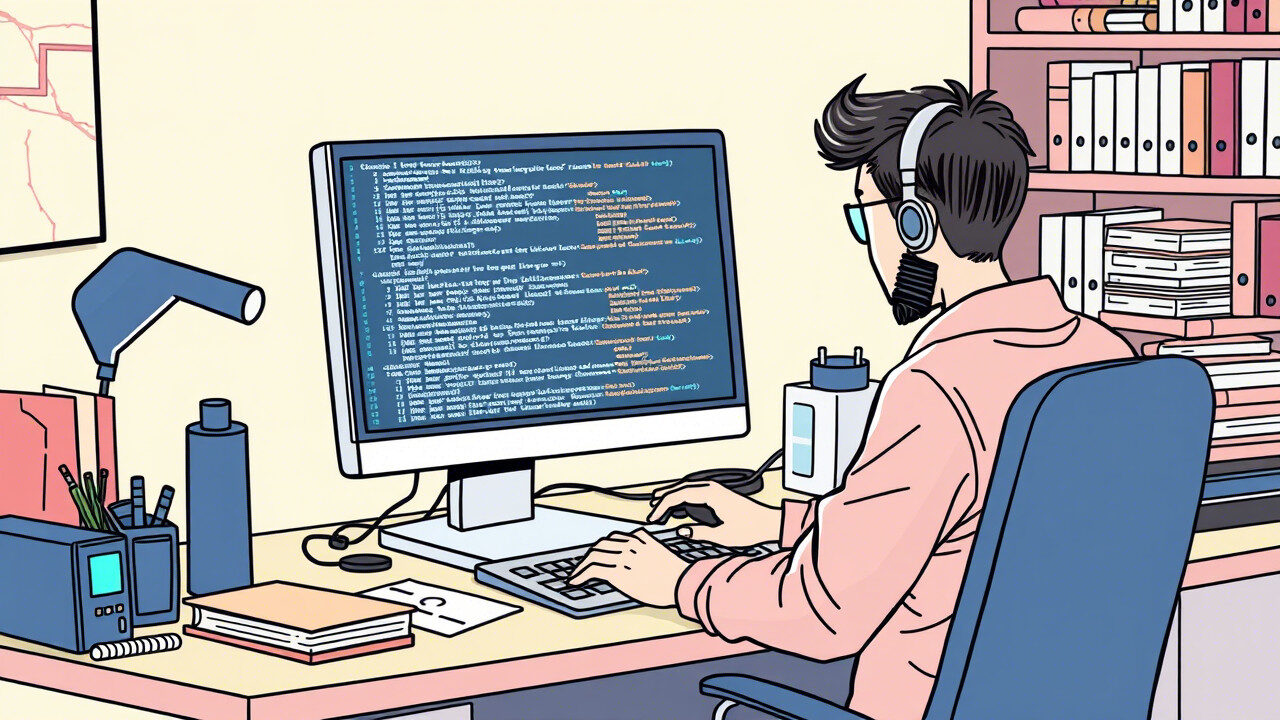As AI-based code generation tools such as GitHub Copilot come into the forefront, there are multiple queries hovering in the minds of developers regarding the ownership and the intellectual property rights upon the code that is generated automatically. Ambiguity exists on the rights of code generated by AI, which stands as one important legal question especially relevant to the licensing and legal compliance scenarios.

This blog will assist you through the maze of code ownership issues and should help clarify your rights when working with AI tools for code generation. We will assist in breaking down the law with respect to ownership and licensing and present the steps you may take to ensure compliance with intellectual property law.
What Is Intellectual Property in the Context of Generated Code?
Understanding intellectual property concerning code generation is essential before broaching the question of ownership. In fact, by “intellectual property”, we refer to the rights given to practitioners of original works such as software code – rights that include the power of the creator to prescribe how his or her creation is used and distributed.
Types of Intellectual Property Relevant to Code:
- Copyright: Protects the original code as a creative work. Copyright is automatic once the code is written but may vary by jurisdiction.
- Patents: Protects novel inventions or processes. If your generated code includes a new, inventive method, it might be eligible for a patent.
- Trade Secrets: Confidential aspects of the code that give the creator a competitive advantage can be protected as trade secrets.
🛠️ Step 1: Understand Who Owns the Generated Code
Determining who owns the code generated by AI tools such as Copilot is one of the major headaches in their use. Ownership of code generally depends on the situation in which the coding was conceived.
Ownership Determinants:
License Agreement: Look up the terms of service of the AI tool you are using (ex: GitHub Copilot). This license agreement often specifies whether generated codes are owned by you, the tool provider, or both.
Contribution to the Code: You may have rights to modified code portions in some cases but retain AI-generated portions based on the contribution or substantial changes you have made to the code.
Work for Hire: If you are using the AI tool in a professional context (say, related to your job), then the generated code will belong to your employer where there is a work-for-hire agreement.
Key Considerations:
Does the AI tool that you have found allow for generating code from prior work, for instance?
Does the tool assert ownership of the generated code or is it entirely your property?
Can you do whatever you want with it in terms of usage, distribution, and sales?
Action Tip: You must always read an AI tool’s Terms of Service so you know just how much the rights to the generated code are affected.
🛠️ Step 2: Review Licensing and Usage Rights
One must know how a license can apply to and be interpreted regarding the use of the generated code. A license means legal permission to use, modify, coat, and distribute the code under specific circumstances.
Common Licensing Type:
1. Open Source: Many AI tools with regard to open-source licenses such as MIT and GPL would allow you to freely use and modify the generated code but carry obligations such as attribution or making the source code available.
2. Proprietary: A few AI tools might operate under proprietary licenses, and in that case, you have no ability to redistribute or modify the generated code without approval.
3. Commercial Use: If you propose to use the generated code commercially, confirm that the license permits this. There may be kits that allow only non-commercial use or require additional fees for commercial licenses.
Importance of Licensing:
1. Clarification of Rights: The licensing terms clearly define your actions with the generated code.
2. Legal Compliance: With licensing in place, you will be compliant with the regulations set forth by the tool provider as far as use of the generated code is concerned.
3. Legal Peace: If there is no clear license, it may infringe the rights of others or face a lawsuit for misappropriate usage.
Action Tip: Lastly, kindly ensure you license the generated code keeping your needs in mind, and, secondly, check the compliance of your intent with any restrictions laid down in the AI tool’s license agreement.
🛠️ Step 3: Address Legal Compliance and Potential IP Disputes
When one uses applications of AI like Copilot, there will certainly be problems in terms of legal conflicts over IP ownership and compliance. If indirectly or inadvertently fed into the existing patents, copyrights, or trade secrets, it has the potential to cause legal trouble.
The Potential Legals Issues are:
Copyright Infringement: There may arise copyright infringement consequence if the AI tool generates codes that are too similar to codes already copyrighted.
Patents: The generated code might embody patented techniques suitable to patent infringement.
Trade Secrets: The AI tool could even infringe on trade secrets/confidentiality agreements if this uses non-public proprietary knowledge or codes.
Ways to Avoid Legal Risks:
Use Licensing Clauses: Make sure the tool that you are using has licensing clauses that protect you from infringement claims.
Conduct a Legal Review: If you are putting such generated code to commercial use, it may make good sense to have this reviewed by your legal team for possible IP issues.
Follow Fair Use Guidelines: Make sure that the generated code falls under fair use or similar exceptions, especially when working with open sources.
Action Tip: Stay up to date with all IP laws and always check your generated code to make sure of compliance within the applicable legal frameworks.
🛠️ Step 4: Protect Your Own Intellectual Property Rights
It is important to secure your ownership along with controls of your intellectual property if you are creating any coding which you want to be protected.
Protect your IP Aspects:
Copyright Your Code: If it is an original, code register for copyright so that it will inhibit unauthorized use.
File for patents: in case the invented code is coupled with new algorithm methods or processes then file a patent.
Use licenses: When you want to share the generated code and want to keep the ownership to yourself, then you can use licenses like MIT, GPL, or proprietary license terms of use.
Why this is important for IP protection:
Monetization: It may create chances of monetizing your innovations.
Control: You control access to how your code will be used and distributed.
Legal Rights: With the IP protection comes a claim against those who use your code unauthorized.
Action Tip: Always document and formalize your intellectual property rights so that they can easily be enforceable in case of a need for it.
🛠️ Step 5: Stay Updated on AI and Intellectual Property Laws
It is well established that AI and intellectual property law evolve continuously, particularly as content produced is increasingly generated. Keeping abreast of the latest development within IP law will just serve to ensure legal compliance.
News Source: Legal Blogs: Sign up for legal blogs or personal websites that report on various subjects such as AI ethics and intellectual property.
Conferences: Attend legal conferences, technology conferences, and all others that are taking place on issues related to upcoming IP changes due to AI.
Consultation of Legal Experts: Make regular visits to an IP attorney to get advice on suitable practices and also any applicable changes in the legal environment.
Action Tip: Perhaps join professional forums or groups talking about AI ethics, intellectual property rights, or any licensing updates.
Final Thoughts: Understanding Ownership and Legal Compliance in AI-Generated Code

It is not easy to navigate the intricate terrain of intellectual property rights in relation to AI-generated code. Understanding the rules of ownership, terms of licensing, and standards of legal compliance allows you to use Copilot and other AI tools in such a way that your rights are upheld and legal conflicts avoided.
Why TechNow Is the suitable IT Support Service Agency in Germany
In particular, if you’re wading through the murky waters of intellectual property and licensing with AI-generated code, TechNow-the suitable IT support service agency in Germany-is here to provide all the help you need. Our expert team provides comprehensive IT solutions, legal compliance advice, and specific strategies for intellectual property protection. No problem is too big or small, whether it requires such services as licensing assistance or legal compliance and ethics in AI- TechNow has you covered to keep your business safe within the fast-paced and changing technological environment.



